15 Top Tourist Attractions in Hanoi
When you come here, you will feel the bustle of life, the diversity of cuisine and the rich culture, history and friendliness of the local people. It is not difficult for you to see sidewalk cafes, street vendors, or street food stalls. And of course, Hanoi is not lacking in the interesting attractions, even it will take you a few days to visit all these great places. Join us to discover 15 top tourist attractions in Hanoi that you should not miss to come here.
Read more: Hanoi city tours
Hoan Kiem Lake (Sword Lake)
Hoan Kiem lake is located in the center and a few minutes walk from Hanoi Old Quarter, where most of the souvenir shops gather.
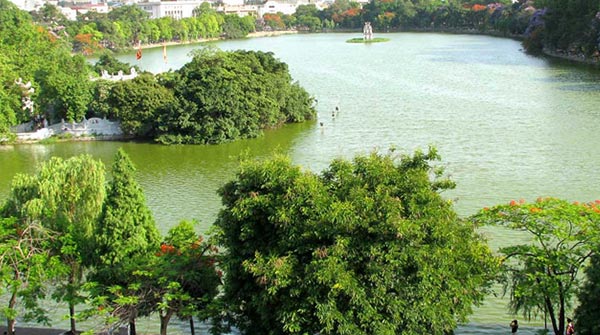
Peaceful and quiet, the lake surrounds Ngoc Son Temple, a pagoda sitting in the centre on a small island. Hoan Kiem lake, Turtle Tower, Ngoc Son Temple is a relic, famous sights, the pride of Hanoi and people around the country when they are towards the capital.
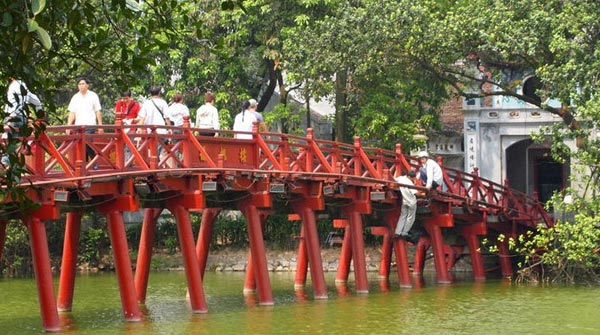
Hanoi tourists and locals alike head to Hoan Kiem lake when seeking a place to get away from the noise of the city. This place is especially suitable for walking, and there are many events taking place here every weekend.
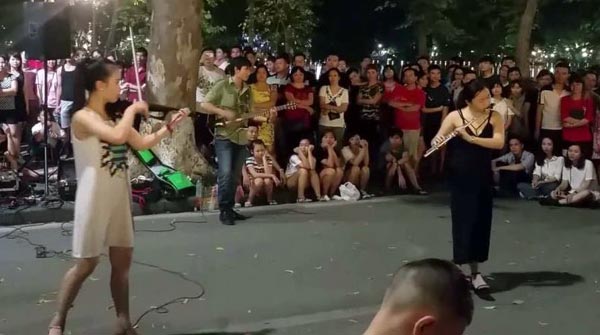
If you are about to visit Hanoi for a few days, it is very likely that you will reside somewhere near Hoan Kiem lake. The lake is considered the center of Hanoi, not only physically but also symbolically. In fact, the more you spend time learning about the lake, the more special it becomes.
36 Hanoi Old Quarter
Located near Hoan Kiem lake, The Old Quarter has the original street layout and architecture of old Hanoi. At the beginning of the 20th century, Hanoi consisted of only about 36 streets. Each street had merchants and households specialized in a particular trade, such as silk traders, metallurgy, food, etc. In the old quarter area, there are also many ancient historical sites including old houses, temples, pagodas and assembly halls.
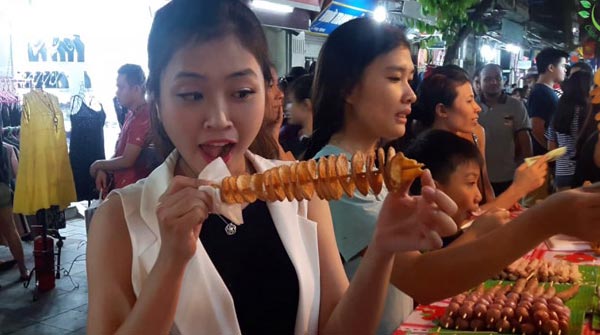
Today, the Old Quarter of Hanoi is an attractive destination for those who want to visit this city.
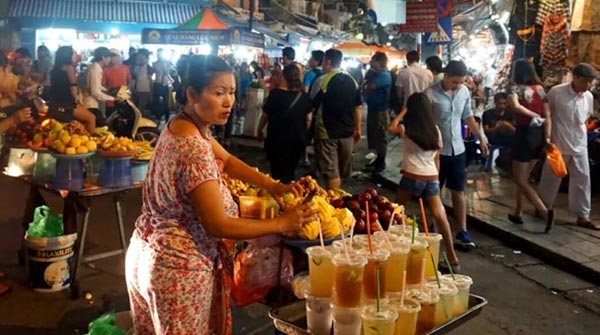
To explore the old quarter of Hanoi, it is the best way to walk because there are a lot of shops, restaurants, cafes and long-standing traditional shops. Another popular transport is cyclo, which is interested in the international tourists because of its sluggishness for street views. Alternatively, you can use the electric car or 2-storey bus.
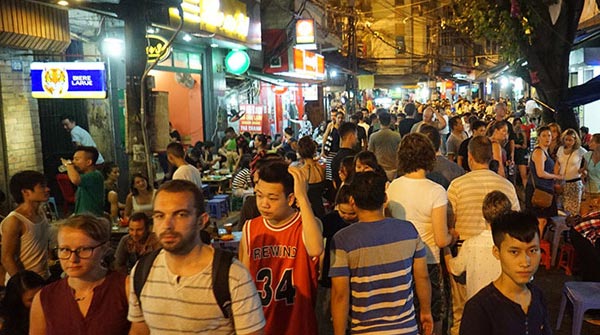
Thang Long Water Puppet Theatre
Puppet show is one of the art traditional performances in Vietnam with high spiritual value. It is the fascinating entertainment stages in the spiritual and cultural life of the people here.
There are two types of puppet: shallow puppet and water puppet. However, water puppet show is the most special type of stage, showing the intelligence and creativity of the artists.
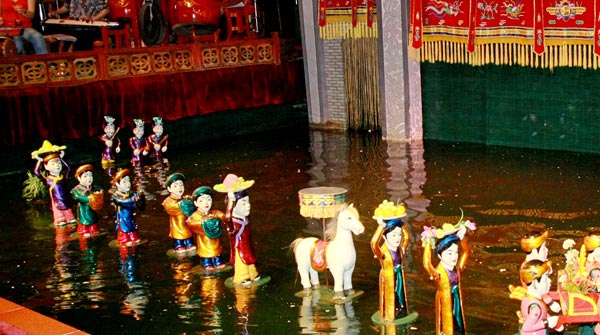
In the art of water puppetry, music is an integral part. It plays not only a role in connecting one repertoire with the others, but also impacts the atmosphere of the whole performance. The rhythm of the music directly affects the puppet control of the actors. Music plays an important role in expressing the personality, actions of the character, creating excitement and attraction for viewers.
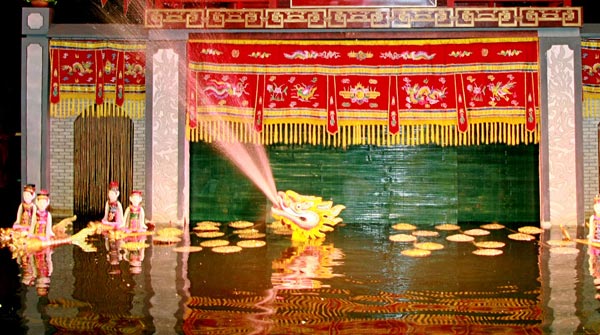
The main instruments in water puppet performance are: Drum, Two-string Fiddle, bamboo flute, percussion, sixteen-stringed zither or thirty-six stringed zither. In the water puppet show, people also use many types of crackers such as firecrackers, fireworks, sparklers to create exciting atmosphere and fanciful sparkle for the show.
Ho Chi Minh Mausoleum – Uncle Mausoleum
Ho Chi Minh Mausoleum is located in the central area of Hanoi, which is a large monument in Hanoi, it is also known as Uncle Ho’s Mausoleum. In the central hall of the mausoleum, the embalmed body of Ho Chi Minh is preserved in the cooled and protected by military honor guards.
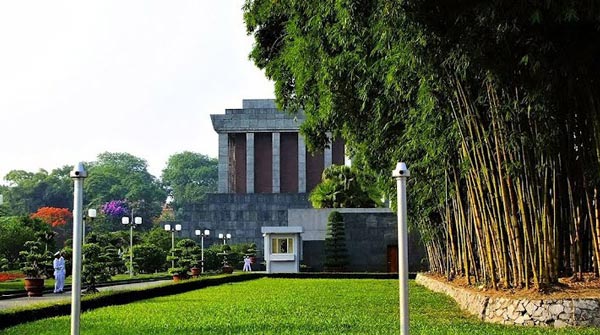
Ho Chi Minh Mausoleum is an important historical attraction of Hanoi, known for honoring the national hero: President Ho Chi Minh. The building is where visitors can express their admiration and gratitude towards the common father/uncle of Vietnamese who has led the country to independence and reunification. It is popularly known among Vietnamese as Uncles’ Mausoleum, for the intimate and familiar atmosphere Ho Chi Minh always created when he was alive. Built over 2 years from 1973 to 1975, the Mausoleum is also a lively illustrator of national unity.
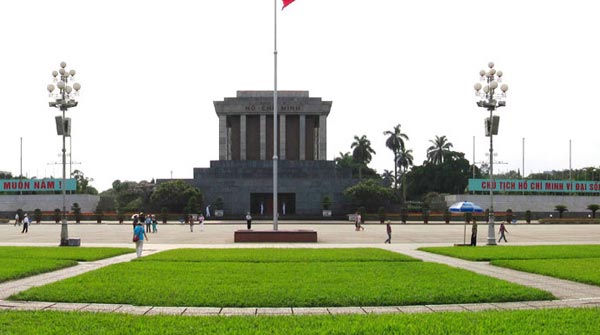
Currently, admission is free and visitors but they must comply with requirements such as grooming, do not bring cameras and keep order in the mausoleum.
Read more: Top Attractions In Ho Chi Minh City
Hanoi Museum
The museum has 6 floors, the floor area scaled down from top to bottom. Hanoi museum give to visitors impression by modern design and convenience. Tourists can go to other floors by elevator or stairs that are designed into a spiral round inside the museum.
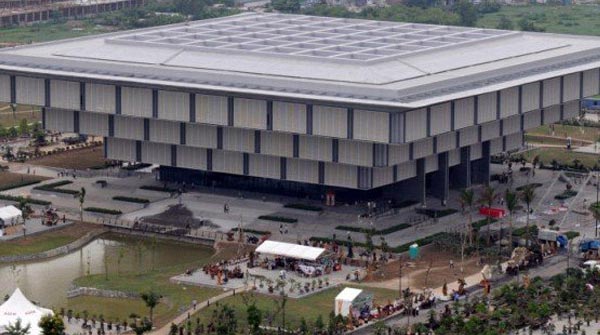
Coming to Hanoi museum, visitors will have opportunity to admire the antiques that are collected from around the country. The third floor of the museum where displays of documents and exhibits are donated by organizations and individuals has large space. A lot of potteries such as bowls, vases or production tools found in Tien Giang, Ca Mau…are displayed on the fourth floor museum.
The Hanoi Museum in the capital city of Vietnam has been listed in the world’s most beautiful museums voted by the US’ Business Insider newspaper.
Hoa Lo Prison
The prison was built in Hanoi by the French, in dates ranging from 1886 to 1898, when Vietnam was still part of French Indochina. The French occupied Hanoi in order to detain Vietnamese patriots who opposed their rule. Hoa Lo prison has the area of 12.908m2, which is the most ancient architecture of Indochina.

After the capital was liberated on 10th October 1954, Hoa Lo Prison was controlled by the revolutionary government. Period 1964-1973s, the America conducted destructive war the North of Vietnam. Hoa Lo Prison became the place to detain the American pilots.
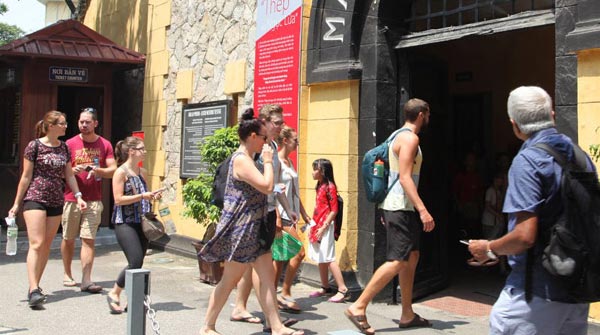
Hoa Lo Prison has intact with many precious materials, science display, and the attractive spot for many domestic and foreign guests to Hanoi. Post Buttletin (the U.S) has an article on Vietnam’s tourist highlights Hoa Lo prison is a destination not to be missed when come to Vietnam.
Hanoi Temple of Literature
The Temple of Literature in Hanoi was Vietnam’s first university, and held the central place in higher education in Vietnam for 700 years, from 1076 to 1779.
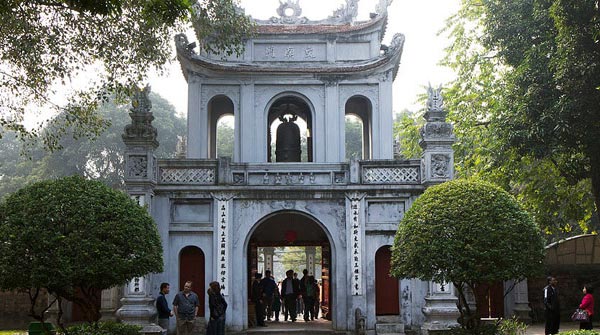
The temple is divided into five court yard, each with its own significance and history. The first courtyard stretches from the main gate to Dai Trung gate; the second stands out with Khue Van Cac pavilion. If you notice well, you will find the pavilion symbol on all street signs of Hanoi. The third courtyard is where doctor names was listed on a tombstone above tortoise backs.
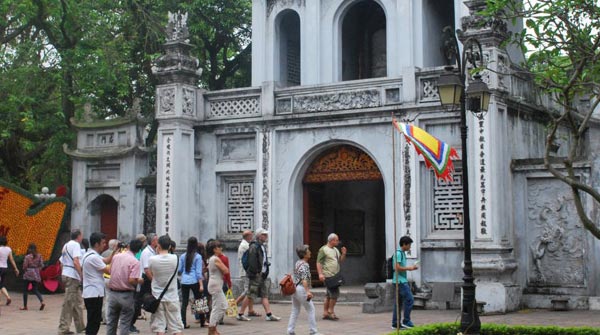
There are a total of 82 tombstones, with names and origins of 1307 doctors, corresponding to 82 examination courses from 1442 to 1779. If you visit the temple at the beginning of the year or in May when many important examinations take place, you will catch sights of numerous students who come and rub the tortoise head. Such an act is believed to bring them luck to pass the test.
Today, this is a place where educational events regularly happened such as award ceremonies for excellent students, poetry festivals…
Vietnam Museum of Ethnology
The Vietnam Museum of Ethnology is located on a 3.27-acre (13,200 m2) property in the Cầu Giấy District, about 8 km from the city center. It is widely considered to be the finest modern museum in Vietnam and a tourist attraction in Hanoi.
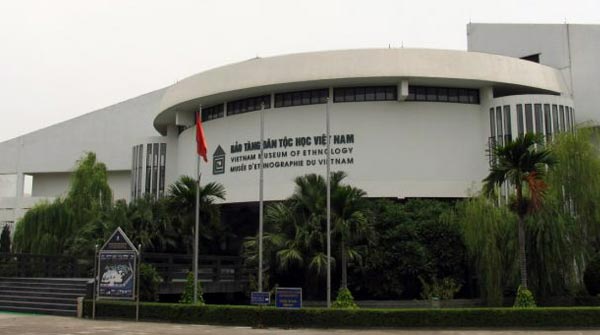
This fabulous collection relating to Vietnam’s ethnic minorities features well-presented tribal art, artefacts and everyday objects gathered from across the nation, and examples of traditional village houses. Displays are well labelled in Vietnamese, French and English.
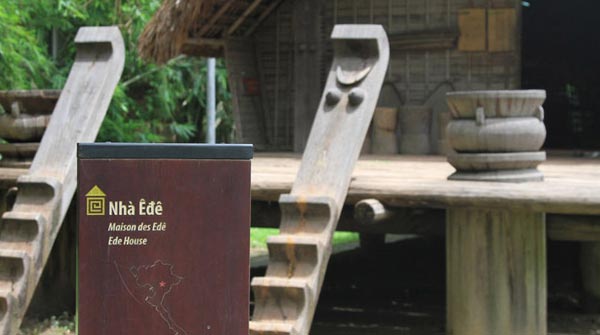
This is the most recent yet probably the largest and undoubtedly the most interesting Museums in Hanoi and Vietnam. The Museum comes out of the recognition that Vietnam is a multi-ethnic country and that more attention should be paid to promote socio-cultural diversity. Despite being out of the way compared with other museums in Hanoi, Vietnam Museum of Ethnology is worth a thorough visit, for those who are keen to learn about the multiculturality of Vietnam and for those who would appreciate some green space.
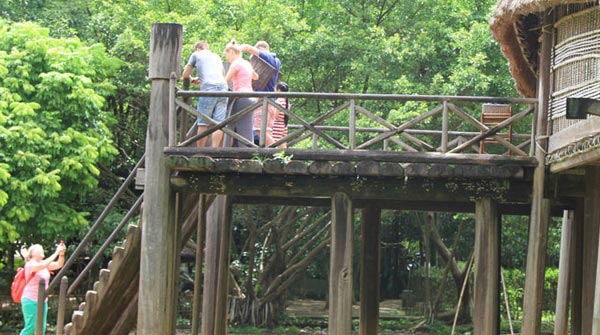
There are both indoors and outdoors section. While the in-housed exhibition is particularly informative, the outdoors display and activities make the museum stand out from the rest. There are a number of houses modeling after the traditional architecture of ethnic minorities, especially those who live in Northern and Central highlands.
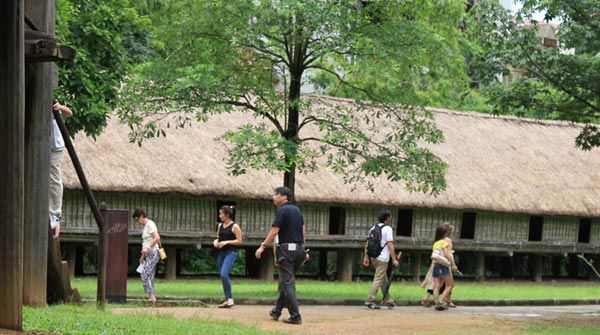
Ho Chi Minh Museum
Ho Chi Minh Museum stores more than 12 thousand documents, artifacts, original film about the life and revolutionary career of President Ho Chi Minh. This is an invaluable asset of the Vietnamese in the education of patriotism, moral of President Ho Chi Minh.
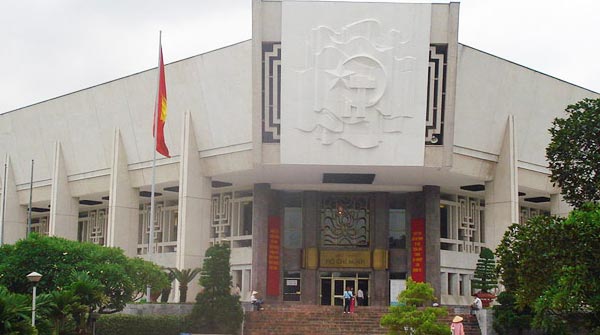
One of the most resourceful museums in Hanoi and undoubtedly in the country, Ho Chi Minh museum is conveniently located in the Ho Chi Minh complex. It can be combined in your day trip to visit Ho Chi Minh mausoleum, One-pillar Pagoda, Ba Dinh square and the War Memorial. The whole museum is a elaborate description of Ho Chi Minh’s life, with 8 chronological topics. The first one, from 1890 to 1910 modeled after his upbringing, hometown and youth. The second topic concerns the next ten years where Ho Chi Minh travelled the world to find out a way to rescue the country from colonialism.
Dong Xuan Market
Dong Xuan Market is located at the old quarter, built in 1889 under the Nguyen Dynasty. Dong Xuan Market is not only the largest busy shopping area in Hanoi but also a famous historical landmark of the Capital. On February 14, 1947, Dong Xuan market was the place where the fiercest battle took place and was the major battle of Hanoi army and people in the early days of the resistance war.
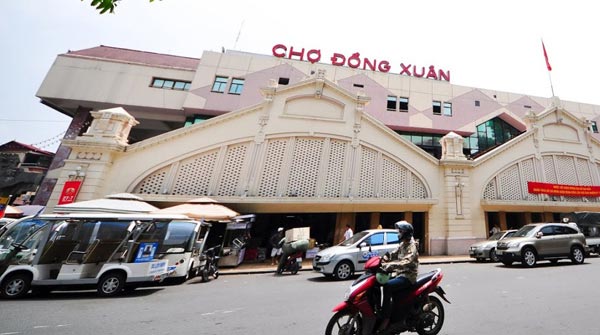
Dong Xuan is the main wholesale market in the North. There is a variety of items such as clothing, shoes, household items, toys, fabrics with traditional motifs. … However, almost items are from China. In addition, there are also stalls selling sweets, souvenirs, food … outside the market.
Dong Xuan Market mainly serves the local people rather than tourists. However, there are several stalls in the market that sell traditional crafts or souvenirs and these may be the right choice for visitors.
Read more: Vietnam trip costs
Vietnam Military History Museum
Most tourists have more or less heard of Vietnam’s historical and heroic struggle against mighty invaders from France and the USA. They, as a result, now flock to Vietnam in general and Hanoi in particular so as to figure out how such a small country as Vietnam could win over in the past severe resistance war!
Hence, in order to retain and preserve the factual objects, artifacts, and vivid proofs of the great national heroic struggle, the Ministry of Defence, under the Vietnam Communist Party’s policy, had the building of the Army Museum (to be changed into Military History Museum in 2002) constructed at the end of 1954, and held its opening ceremony on 22nd December, 1959 on the occasion of the 15th anniversary of the Vietnam People’s Army foundation.

The museum content covers the six following periods: The history of the Vietnamese nation and the birth of the Vietnam People’s Army, The Vietnamese struggle against French colonialism, The Vietnamese struggle against American imperialists, The Vietnam People’s Army on the path to a regular modern army, The People and the Army are oneness, and will be invincible, Piece of weaponry displayed in the museum courtyard (such as airplanes, tanks, heavy artilleries, rockets, mortars, bombs, and so forth). After your time here, you will realize that the museum is the concentrated embodiment of the Vietnamese people’s spirit revealed in President Ho Chi Minh’s writing: “Nothing is more precious than independence and freedom” in the historic Nation’s Independence Proclamation.
The Vietnam Military History Museum is one of the seven national museums in the quantity of the artifacts and visitors nowadays. Through honest and unique original artifacts, the museum really becomes a center of culture and an attractive destination for visitors to learn more about military history of Vietnam.
Bat Trang Ceramic Village
Bat Trang is an ancient village, which is very famous for making ceramic products. Many of these ceramic products have been exported for years; as a result, they are a good income for the locals.
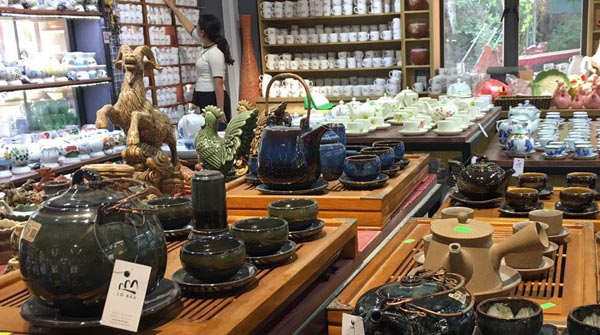
There is a ceramic market in the village, where we can buy ceramic tile painting, flower vases, tea pots and cups, bowls, plates, spoons, even ceramic dogs. Not only the local houses where we can see how to mix material make and paint ceramic products but there are also classes where we can learn how to create a vase or anything from clay that we want and paint the ready-make products.
In addition, it is great to walk around the village, visit some local houses which are the factories and Bat Trang Pagoda.
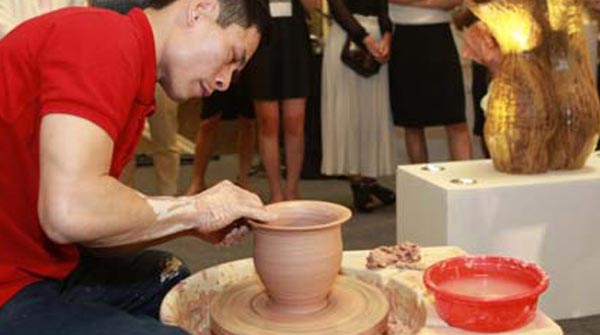
Bat Trang ceramic village has become a popular destination for the young living in Hanoi (college or high school students) to visit during weekends. It has also become famous among foreign tourists who want to understand more about the historical and traditional values in each handicraft product.
Imperial Citadel of Thang Long
Situated at the heart of Hanoi, the Central Sector of the Imperial Citadel of Thang Long is an outstanding place of interest not only for the capital city but also for the country as a whole.
The site is one of the ten special national heritage sites proclaimed by the Prime Minister in 2009 and was inscribed on the World Heritage List by UNESCO’s World Heritage Committee in 2010 and reopened in 2012.
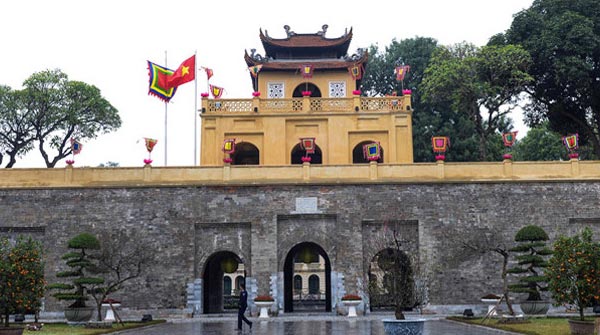
The standing monuments and subterranean vestiges of palaces, together with numerous other unique artifacts unearthed in the Central Sector of the Imperial Citadel of Thang Long-Hanoi are invaluable assets not only of Vietnam but also the entire human race.
Read more: Hanoi cooking class tour
Duong Lam Ancient Village
Duong Lam is an ancient village located in outskirt of Hanoi. It takes about 1 hour 30 minutes from Hanoi center to this area.
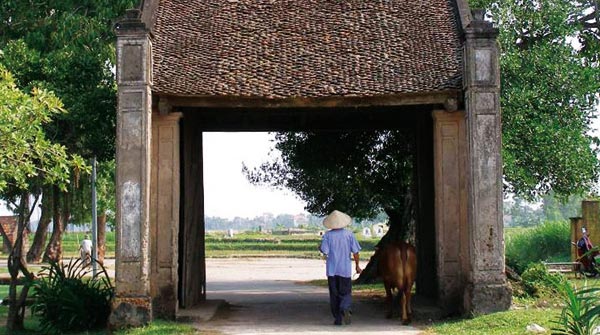
Duong Lam ancient village is very famous for ancient houses system. The main material to build the houses here is laterite – very popular material in this area. Local people were dug the laterite from underground and hew them to be different shapes, normally rectangular blocks, to build and decorate the houses.
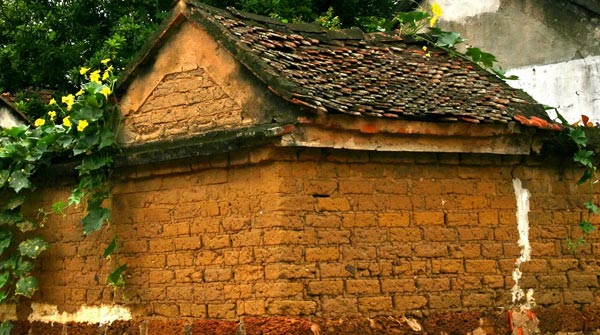
Nowadays, Duong Lam village still retains most of the basic characteristics of a village of Vietnam with port village, trees, courtyard, temples, well, water fields… The roads of Duong lam were special because they have the shape as the bones of fish. Some features are still kept in Duong Lam ancient village is the old village gate in Mong Phu village. Duong Lam village still conserves about 800 ancient houses.
Ba Vi National Park
Ba Vi national park is the green lung of Ha Noi and also the home for many species of wild animal, including many rare species that was listed on Red list of Vietnam. According to statistics of the scientists, Ba Vi national park has 812 higher plants and 15 rare plants as Green spruce (Calocedrus macrolepis), woody fern (Cyatheales) and so on. The national park has 45 species of animal, 115 species of bird, 27 species of amphibians, 61 species of reptile, 86 species of insect with 23 rare species that was listed on Red list of Vietnam as golden pangolin, flying squirrel, peacock…
Visitors can also explore deep caves hidden in the mountains or challenge themselves to climb the Ba Vi peaks that rise up to 1,296 meters.
Great! We have just discovered 15 attractive tourist destinations in Hanoi. Wish you have a wonderful trip to Hanoi. If you need a Hanoi tour, please don’t hesitate to contact us.


